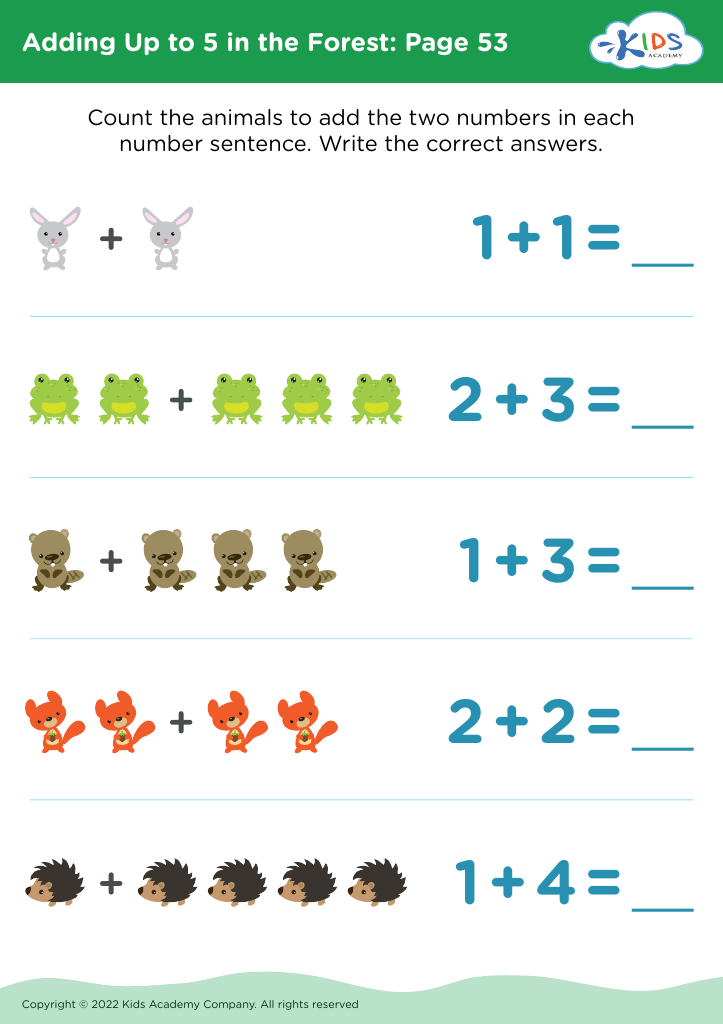Visual comprehension Addition & Subtraction Worksheets for Ages 3-4
7 filtered results
-
From - To
Enhance early math skills with our Visual Comprehension Addition & Subtraction Worksheets for ages 3-4. These engaging activities help young learners understand basic addition and subtraction through vibrant visuals and fun exercises. Perfect for preschoolers, these worksheets develop critical thinking, number recognition, and fine motor skills. Designed by educational experts, they provide a solid math foundation in an enjoyable way. Easily printable and accessible, these resources are ideal for both classroom and home use. Build your child's confidence and enthusiasm for math with Kids Academy’s carefully crafted worksheets, promoting lifelong learning.
Visual comprehension in addition and subtraction for ages 3-4 is vital as it sets the foundation for numeracy and mathematical thinking. At this young age, children are developing cognitive skills rapidly, and introducing math in a visual context allows them to grasp concepts more intuitively. By using visual aids such as pictures, objects, and fingers, children can see the process of adding or taking away quantities, making abstract numbers tangible and comprehensible.
Early exposure to these concepts through visuals also fosters problem-solving and critical-thinking skills. When children see how numbers interact in practical, visual ways, they are better equipped to understand more complex mathematical concepts later on. For instance, children who can visualize and manipulate small groups of items are more likely to transition smoothly to mental arithmetic.
Moreover, engaging with addition and subtraction visually can enhance a child's confidence and enthusiasm for learning. Activities such as playing with colorful blocks or sorting objects translate into meaningful, interactive experiences that make math fun and less intimidating.
In short, stressing visual comprehension in early numeracy not only nurtures a child's intellectual development but also catalyzes a love for learning. With strong foundational skills, children are more likely to achieve academic success and develop a lifelong affinity for mathematics.



























